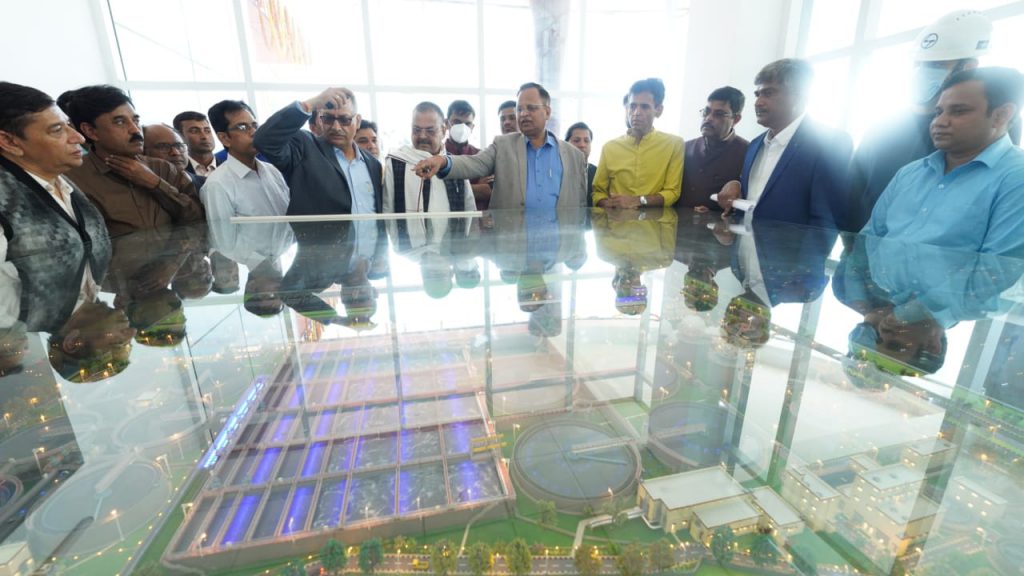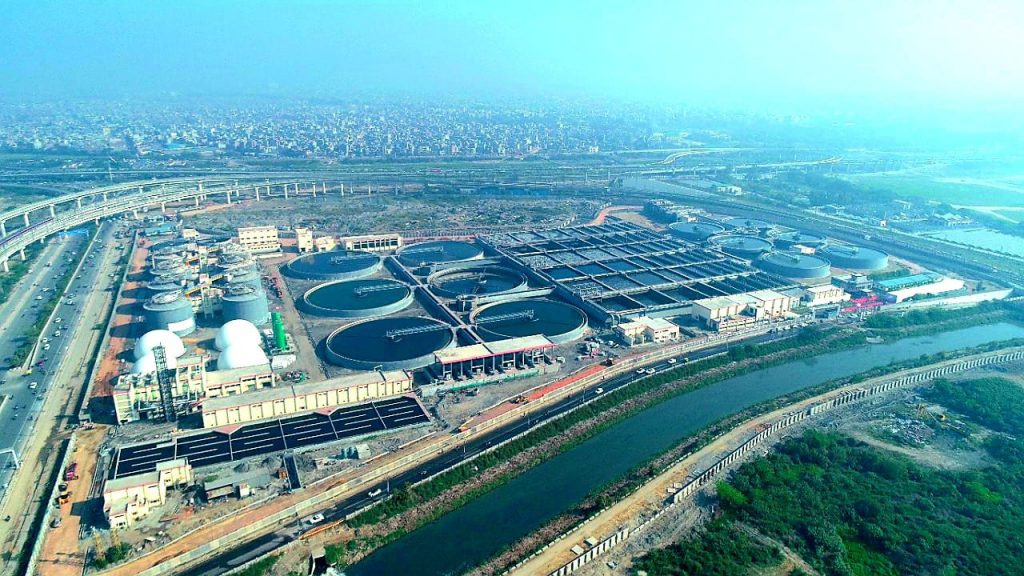Introduction of this plant is a major step forward to clean the river Yamuna – Satyendar Jain
The plant has been built using state-of-the-art technology & will be fully automated based on the SCADA system- Satyendar Jain
Approximately 23 lakh people residing in & around the area will be benefited from this treatment plant-Satyendar Jain
About 70 MGD of wastewater generated from areas of Shakti Nagar, Kamla Nagar, Roop Nagar, Delhi University Campus, Nehru Vihar, and University area will be treated by this new WWTP
A 71.51 km long sewer line will be laid in Sangam Vihar and Deoli constituency to connect all the households of the area to the sewage network

New Delhi
Under the leadership of Chief Minister Shri Arvind Kejriwal, the Delhi Government is working tirelessly day and night in the direction of its aim of cleaning the river Yamuna. On Saturday, Water Minister Shri Satyendar Jain inaugurated a huge Wastewater Treatment Plant (WWTP) at Coronation Pillar site with a capacity of treating 31.80 crore liters of waste water per day. The inauguration of this plant is a major step forward in cleaning the river Yamuna, said Satyendar Jain. The Minister also laid the foundation stone of a 71.51 km long sewer line in Sangam Vihar and Deoli Constituency.
The newly built Coronation Pillar Wastewater Treatment Plant will cater to the requirements of sewage treatment for the coronation pillar drainage zone. The wastewater that is generated from the areas of Shakti Nagar, Kamla Nagar, Roop Nagar, Delhi University Campus, Nehru Vihar and University area will be treated at this plant. Apart from this, the sewage generated from unauthorised colonies such as Saroop Nagar, Bhalswa, Sant Nagar and Wazirabad Group of colonies will also be treated here now, Water Minister Shri Satyendar Jain said that “The wastewater that is being discharged from these colonies will be treated at the coronation pillars WWTP, which will eventually lead to cleaning the river Yamuna, benefiting lakhs of people of the area. Presently, the sewage which directly falls into the Supplementary drain will now get trapped and treated at the Coronation Pillar WWTP through the pumping station available in Burari. The treated wastewater will then fall in the supplementary drain before getting merged with the river Yamuna.”

Salient features of the Coronation wastewater treatment plant:
1) The plant is constructed with the latest technology with effluent parameters of biochemical oxygen demand and TSS < 10 mg/L, which includes nitrogen and phosphorus removal, including disinfection, and is in line with the latest parameters of the Central Pollution Control Board (CPCB), along with the provision of power generation, thereby making the plant significantly self-sustainable.
2) The plant will be fully automated based on the SCADA system. There will be online stage-wise monitoring of all the effluent parameters. SCADA refers to Supervisory Control and Data Acquisition, which is a system of software and hardware elements that allows industries to monitor, gather, and process real-time data. This is crucial to maintaining efficiency, and communicating system issues to help mitigate downtime and make the system self-reliable.
3) Provision of mechanical dewatering of sludge, thereby eliminating the requirement of sludge drying beds. Therefore, the new plant is more efficient with reduced recurring costs and footprints.
4) Provision of membrane-type gas holders to hold the produced material efficiently. These membrane gas holders are the most flexible, economical, as well as reliable and efficient biogas storage solutions. The membrane gas holder is important for the process of anaerobic digestion as it ensures a regular supply of biogas availability for the rest of the plant to operate consistently and efficiently.
5) This plant will benefit the approximately 23 lakh population of the area.
The plant has been built using state-of-the-art technology, which will play a pivotal role in curbing the existing wastewater treatment issue in the capital on a large scale. Due to the use of advanced technology, this plant will help maintain efficiency.
Moreover, in order to strengthen the existing sewerage system, the Delhi government has initiated the work of laying 71.51 km of sewer lines in 20 unauthorised colonies of Sangam Vihar and Deoli Constituency. Due to the non-availability of sewerage systems in the area, the generated sewerage from this area is currently being discharged into the local pond/ septic tank/ stormwater drains, etc. On this issue, Water Minister Shri Satyendar Jain said, “The drain discharge goes into the River Yamuna through Najafgarh Drain, causing an increase in the pollution levels of the river. To reduce this water-polluting content, sewer lines will be laid for collecting and treating sewage at the nearby WWTP after which it will directly fall into the river Yamuna”.
This, 71.51km of 300 mm to 500 mm dia internal and peripheral sewer lines will be laid along with the construction of manholes/chambers and house sewer connections. This work will be completed in 15 months at a total cost of 42.36 crores and will benefit approximately 90,000 people living in these areas of 20 unauthorised colonies namely:
Sangam Vihar (05 Colonies): E-block Sangam Vihar, F-2 block Hamdard, Near Batra Hospital MB Road Sangam Vihar, F-1 block Sangam Vihar, D-block Sangam Vihar, Sangam Vihar Colony Sangam Vihar.
Deoli (15 Colonies): A-block Sangam Vihar (regn. 06), A-block Sangam Vihar (regn 921), B-block Sangam Vihar (regn. 694), B-block Sangam Vihar (regn. 1566), B-1-block Sangam Vihar (regn. 706), L-block SangamVihar, L1 A-block Sangam Vihar, Block C part-1 Sangam Vihar, L-Ist block Sangam Vihar, C-block Sangam Vihar, L block Sangam Vihar, F-3 Block Sangam Vihar, G-block ND-62 Sangam Vihar, Block – C Part-II Sangam Vihar, Durga Vihar Devli Extn.
